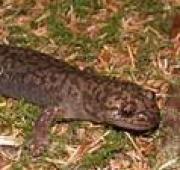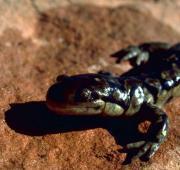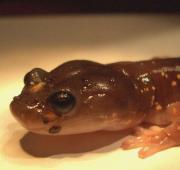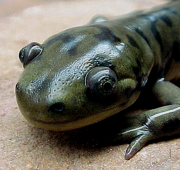 A salamander is an amphibian that has four legs, a long and slender body and a long tail. Despite their lizard-like appearance, salamanders are most closely related to the smaller amphibious lizard, the newt.
A salamander is an amphibian that has four legs, a long and slender body and a long tail. Despite their lizard-like appearance, salamanders are most closely related to the smaller amphibious lizard, the newt. Salamanders are found all over the world generally in more temperate climates. All species of salamander are aquatic or semi-aquatic due to their amphibious nature and permeable skin. The moist skin of the salamander means that the salamander inhabits aquatic regions or wetlands.
Salamanders are found all over the world generally in more temperate climates. All species of salamander are aquatic or semi-aquatic due to their amphibious nature and permeable skin. The moist skin of the salamander means that the salamander inhabits aquatic regions or wetlands.


Most species of salamander are brightly coloured, particularly the male salamanders during the breeding season, when their colours become brighter and more intense in order to try to attract a female. Those species of salamander that live underground are often either white or pink in color due to the fact that their skin is never exposed to the sun.
The skin of salamanders secretes mucus, which helps keep the animal moist when on dry land, and maintains their salt balance while in water, as well as providing a lubricant during swimming. Salamanders also secrete poison from glands in their skin, and some additionally have skin glands for secreting courtship pheromones.
Salamander population numbers have been dramatically decreasing possibly due to levels of fungus that is increasingly present in the water. It is unknown as to whether or not this is the reason for the decreasing salamander numbers but pollution levels are also thought to have played a big part.

